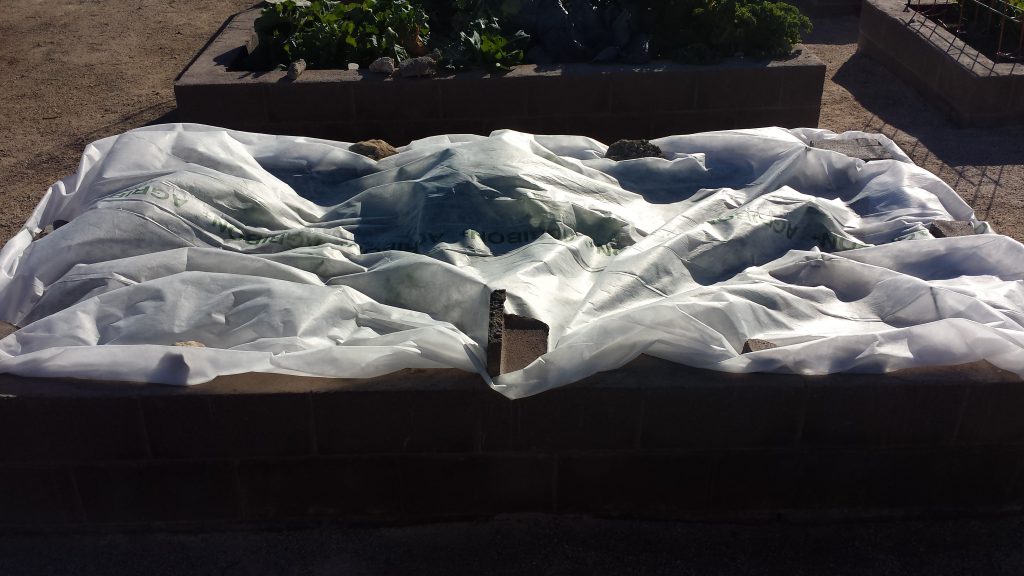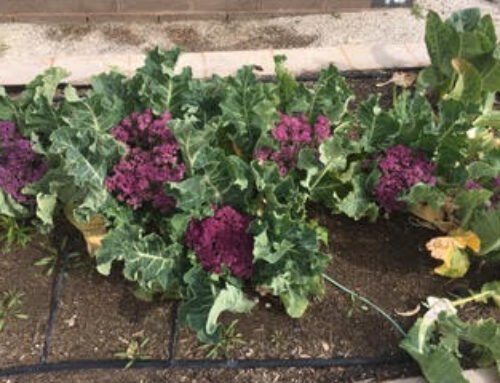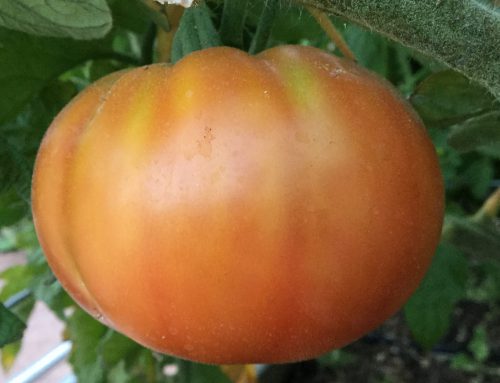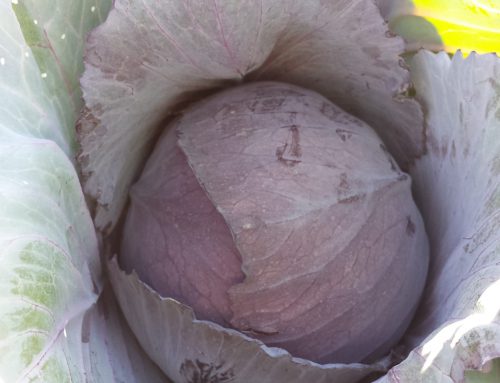Our gardeners have some beautiful cool season gardens started! We even have a few beds that are still growing strong with warm season plants. Those plants will continue producing until killed by frost. Around this time (or a bit sooner depending on the plant), I pick off the flowers of the warm season plants so that all of the plant’s energy is focused into ripening the fruit that’s already set. Those new flowers won’t have time to amount to much before the frost comes.
In our area, we can continue to grow cool season crops through the winter with frost protection. Different plants can be damaged at different temperatures and we eventually get low enough each winter for most of our cool season veggies to be damaged. We can help them along by covering them with frost protection blankets. There are several kinds sold locally but even more can be found online. They come with different amounts of protection. Hopefully, they’ll be labeled with how much protection they offer but I’ve seen several locally that don’t provide this type of information.
The covers that provide the best protection are more tightly woven. These don’t let as much sun through so they should be removed in the morning. One locally sold cover says not to leave on for more than 48 hours. This provides great protection but it might not be convenient to use at a community garden unless you’re there regularly to pull it back in the morning and then to recover the plants in the late afternoon. For the community garden, I choose a frost cover that can be left on all the time. I’ll pull it back when the forecast shows a few nights above freezing otherwise I just leave it alone. At home, I choose covers with a higher level of protection since I can easily pull them back each morning. Some people like to use old bedding sheets but I prefer actual frost blankets. I like to know the amount of protection it offers and whether or not I can leave it in place long term.

Frost blanket at garden
The lighter frost blankets can be draped directly on the plants. The heavier blankets often need to be supported when covering more fragile plants like leafy greens. For the best protection, make sure the blanket is tightly secured. I like to roll under the edges and weigh them down in many places along the edge of the raised bed. You can also roll the edges around long pieces of wood the length of the bed. Using garden stakes will punch holes in the fabric and make it more difficult to use next year. You don’t want the cold air to be able to get in under the blanket. With gentle handling, these covers can last several years.
Here is a great article from UNCE, our local Cooperative Extension, about frost damage. There is a chart at the end with dates for Southern NV frost probabilities. For Las Vegas, the article lists our earliest frost date as Oct. 31st, 50% probability as Nov. 24th, and latest frost date as Dec. 19th. I used to really pay attention to each year’s projected dates, but now I just try to have my frost protection covers and any tools (like supports) unpacked and ready to go in early November. Then I just watch the 7 day forecasts.
Now is the time to starting thinking about frost protection. Take a look around town or a quick online search will give you even more options.
Happy Gardening!




